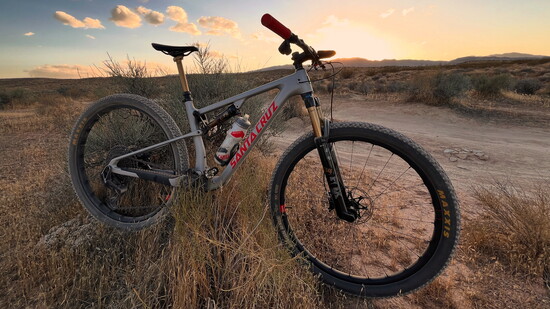I met Marc Mortensen on a warm morning in St. George, Utah—red rock in the distance, and a bike trail close by. Most people know Marc as the guy on the bike. But that’s just a fraction of the man.
Marc is the Director of Operations for the City of St. George, overseeing everything from facilities and tech infrastructure to large-scale public projects. But talk to him for more than a minute, and it’s clear: he’s not just running systems—he’s helping shape a city.
His journey into public service wasn’t exactly planned. Back in 1998, he arrived in St. George with his life packed into a pickup and dreams of being a television anchor. Then a public relations job listing changed everything.
“I didn’t know a soul here,” he tells me, “but I applied, got the job and never left.” He came for the job—but stayed for the lifestyle.
And that lifestyle is central to who he is. A former snowboarder, Marc traded in his season pass at Park City for paved trails and desert dirt. Running, riding, hiking—it’s not just fitness for him—it’s a way of grounding himself in a fast-moving world.
That perspective shows up in his work. Marc has helped shape some of St. George’s most impactful developments—Town Square, the St. George Boulevard reconstruction and the city’s long-running relationship with Ironman. He’s both raced in and managed the event.
“Working with our local teams on Ironman has been one of the highlights of my career,” he says. His pride isn’t about ego but about collaboration, community, and legacy.
Right now, Marc is project manager for the new City Hall, a multi-use government space that’s designed as much for gathering as it is for operations.
“We’re doing things that, to my knowledge, haven’t been done in any city hall in the country,” he explains. There’s excitement in his voice, but it’s the kind that comes from stewardship—not flash.
His life as an athlete feeds his vision for the city. In 2017, he led the creation of St. George’s first Active Transportation Plan, helping connect a nearly 100-mile trail system to the people who live and move through it. That mindset also helped shape the city’s first bike park—an idea Marc pitched that’s now expanded into multiple parks.
“St. George was known for running and golf,” he said. “Now it’s a mountain biking town too.”
He’s not just building for the weekend rider. As past president of the Southern Utah Bicycle Alliance, Marc has focused on transportation equity—ensuring people can bike to work, to appointments or to dinner, safely and efficiently.
“If you build it, they will come,” he said. And in St. George, they have.
When I asked about his favorite biking memory, he didn’t mention a race or a vista. He described silence.
“Sometimes I’m the only person for miles. I stop, hear my own breathing, look around. Those moments—they give me goosebumps.”
You could tell it wasn’t about escape—it was about presence.
Before we wrapped, I asked what advice he’d give to those looking to get involved in their city. He didn’t hesitate.
“Speak up. Show up. Most of our best ideas started with someone in the community. Local government is where the rubber meets the road—and where you can see the difference you make.”
As we talked about the future of St. George—its tech growth, evolving downtown, and increasing diversity—Marc’s optimism was grounded.
“We’ve got a get-it-done attitude here,” he says. “That’s why I’m still excited after all these years.”
After spending time with him, it’s clear: Marc doesn’t just help run St. George—he helps define it.
